Energy 1,013 kJ (242 kcal) Sugars 0.00 g Fat 13.92 g | Carbohydrates 0.00 g Dietary fibre 0.0 g Saturated 5.230 g | |
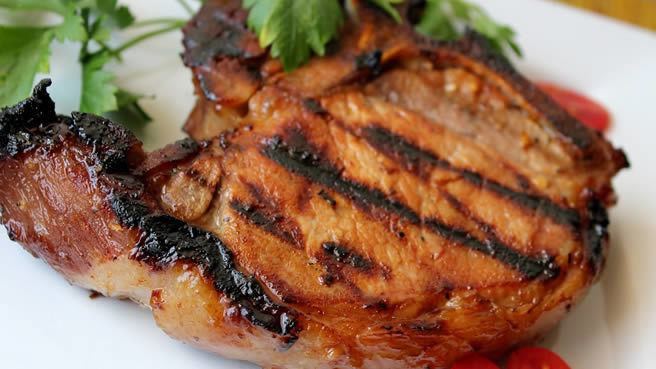 | ||
Similar Beef, Meat, Chicken meat, Lamb and mutton, Onion | ||
Pork is the culinary name for meat from the domestic pig (Sus scrofa domesticus). It is the most commonly consumed meat worldwide, with evidence of pig husbandry dating back to 5000 BC. Pork is eaten both freshly cooked and preserved. Curing extends the shelf life of the pork products. Ham, smoked pork, gammon, bacon and sausage are examples of preserved pork. Charcuterie is the branch of cooking devoted to prepared meat products, many from pork.
Contents
- How it s made pork products full documentary 720p hd
- History
- Consumption patterns
- Asian pork consumption
- Pork products
- Fresh meat
- Processed pork
- Cuts
- Nutrition
- Religious restrictions
- Judaism
- Islam
- Christianity
- Disease in pork
- References
Pork is the most popular meat in East and Southeast Asia, and is also very common in the Western world. It is highly prized in Asian cuisines for its fat content and pleasant texture. Consumption of pork is forbidden by Jewish and Muslim dietary law, a taboo that arises from perceptions of pigs' hygiene (they wallow in mud to keep cool) as well as from the ways pigs are slaughtered. The sale of pork is illegal or severely restricted in Israel and in certain Muslim countries, particularly those where sharia law is part of their constitution.
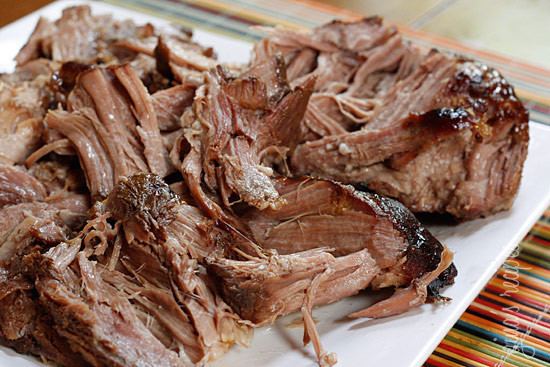
How it s made pork products full documentary 720p hd
History
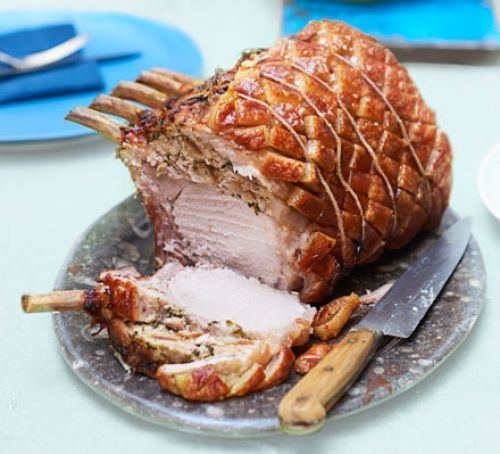
The pig is one of the oldest forms of livestock, having been domesticated as early as 5000 BC. It is believed to have been domesticated either in the Near East or in China from the wild boar. The adaptable nature and omnivorous diet of this creature allowed early humans to domesticate it much earlier than many other forms of livestock, such as cattle. Pigs were mostly used for food, but people also used their hides for shields and shoes, their bones for tools and weapons, and their bristles for brushes. Pigs have other roles within the human economy: their feeding behaviour in searching for roots churns up the ground and makes it easier to plough; their sensitive noses lead them to truffles, an underground fungus highly valued by humans; and their omnivorous nature enables them to eat human rubbish, keeping settlements cleaner.

Charcuterie is the branch of cooking devoted to prepared meat products such as bacon, ham, sausage, terrines, galantines, pâtés, and confit, primarily from pork. Originally intended as a way to preserve meats before the advent of refrigeration, these preparations are prepared today for the flavours that are derived from the preservation processes. In 15th century France, local guilds regulated tradesmen in the food production industry in each city. The guilds that produced charcuterie were those of the charcutiers. The members of this guild produced a traditional range of cooked or salted and dried meats, which varied, sometimes distinctively, from region to region. The only "raw" meat the charcutiers were allowed to sell was unrendered lard. The charcutier prepared numerous items, including pâtés, rillettes, sausages, bacon, trotters, and head cheese.
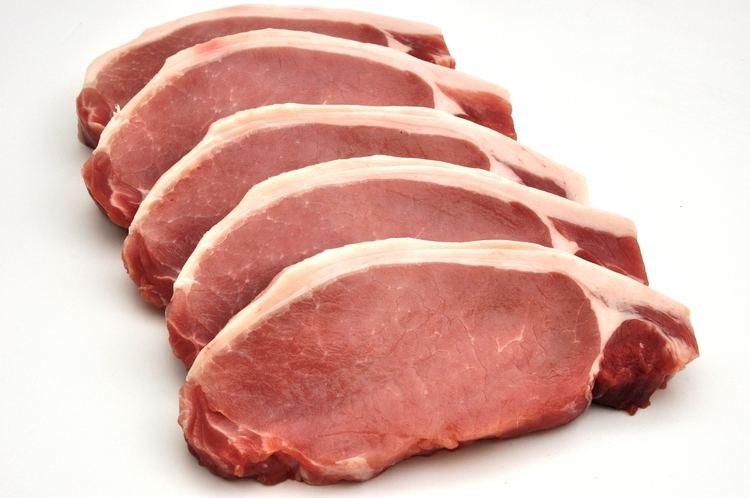
Before the mass production and re-engineering of pork in the 20th century, pork in Europe and North America was traditionally an autumn dish—pigs and other livestock coming to the slaughter in the autumn after growing in the spring and fattening during the summer. Due to the seasonal nature of the meat in Western culinary history, apples (harvested in late summer and autumn) have been a staple pairing to fresh pork. The year-round availability of meat and fruits has not diminished the popularity of this combination on Western plates.
Consumption patterns
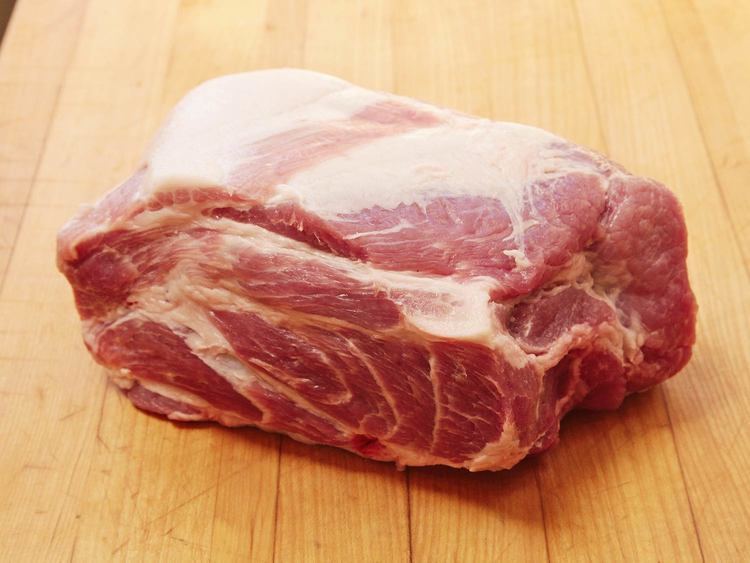
Pork is the most widely eaten meat in the world, accounting for about 38% of meat production worldwide. Consumption varies widely from place to place. The meat is taboo to eat in the Middle East and most of the Muslim world because of Jewish kosher and Islamic Halal dietary restrictions. But pork is widely consumed in East and Southeast Asia, Europe, Sub-Saharan Africa, the Americas and Oceania. As the result, large numbers of pork recipes are developed throughout the world. Feijoada for example, the national dish of Brazil (also served in Portugal), is traditionally prepared with pork trimmings: ears, tail and feet.
According to the USDA's Foreign Agricultural Service, nearly 100 million metric tons of pork were consumed worldwide in 2006 (preliminary data). Increasing urbanization and disposable income has led to a rapid rise in pork consumption in China, where 2006 consumption was 20% higher than in 2002, and a further 5% increase projected in 2007. In 2015 recorded total 109.905 million metric tons of pork were consumed worldwide.
Asian pork consumption
Pork is popular throughout eastern Asia and the Pacific, where whole roast pig is a popular item in Pacific Island cuisine. It is consumed in a great many ways and highly esteemed in Chinese cuisine. Currently China is the world's largest pork consumer, with pork consumption expected to total 53 million tons in 2012, which accounts for more than half of global pork consumption. In China, pork is preferred over beef for economic and aesthetic reasons; the pig is easy to feed and is not used for labour. The colours of the meat and the fat of pork are regarded as more appetizing, while the taste and smell are described as sweeter and cleaner. It is also considered easier to digest. In rural tradition, pork is shared to celebrate important occasions and to form bonding. In China, pork is so important that the nation maintains a "strategic pork reserve". Red braised pork (hong shao rou), a delicacy from Hunan Province, is regarded as the "brain food" which inspired Mao Zedong. Other popular Chinese pork dishes are sweet and sour pork, bakkwa, and charsiu. In the Philippines, due to 300 years of Spanish colonization and influence, lechon, which is an entire roasted suckling pig, is the national delicacy.
Pork products
Pork may be cooked from fresh meat or cured over time. Cured meat products include ham and bacon. The carcass may be used in many different ways for fresh meat cuts, with the popularity of certain cuts and certain carcass proportions varying worldwide.
Fresh meat
Most of the carcass can be used to produce fresh meat and in the case of a suckling pig, the whole body of a young pig ranging in age from two to six weeks is roasted. Danish roast pork or flæskesteg, prepared with crispy crackling is a national favourite as the traditional Christmas dinner.
Processed pork
Pork is particularly common as an ingredient in sausages. Many traditional European sausages are made with pork, including chorizo, fuet, Cumberland sausage and salami. Many brands of American hot dogs and most breakfast sausages are made from pork. Processing of pork into sausages and other products in France is described as charcuterie.
Ham and bacon are made from fresh pork by curing with salt (pickling) and/or smoking. Shoulders and legs are most commonly cured in this manner for Picnic shoulder and ham, whereas streaky and round bacon come from the side (round from the loin and streaky from the belly).
Ham and bacon are popular foods in the west, and their consumption has increased with industrialisation. Non-western cuisines also use preserved meat products. For example, salted preserved pork or red roasted pork is used in Chinese and Asian cuisine.
Bacon is defined as any of certain cuts of meat taken from the sides, belly or back that have been cured and/or smoked. In continental Europe, it is used primarily in cubes (lardons) as a cooking ingredient valued both as a source of fat and for its flavour. In Italy, besides being used in cooking, bacon (pancetta) is also served uncooked and thinly sliced as part of an antipasto. Bacon is also used for barding roasts, especially game birds. Bacon is often smoked, using various types of wood, a process which can take up to ten hours. Bacon may be eaten fried, baked, or grilled.
A side of unsliced bacon is a "flitch" or "slab bacon", while an individual slice of bacon is a "rasher" (Australia, Ireland, New Zealand and the United Kingdom) or simply a "slice" or "strip" (North America). Slices of bacon are also known as "collops". Traditionally, the skin is left on the cut and is known as "bacon rind". Rindless bacon, however, is quite common. In both Ireland and the United Kingdom, bacon comes in a wide variety of cuts and flavours, and is predominantly known as "streaky bacon", or "streaky rashers". Bacon made from the meat on the back of the pig is referred to as "back bacon" and is part of traditional full breakfast commonly eaten in Britain and Ireland. In the United States, back bacon may also be referred to as "Canadian-style Bacon" or "Canadian Bacon".
The USDA defines bacon as "the cured belly of a swine carcass", while other cuts and characteristics must be separately qualified (e.g. "smoked pork loin bacon"). "USDA Certified" bacon means that it has been treated for Trichinella.
The canned meat Spam is made of chopped pork shoulder meat and ham.
Cuts
The pig is well known for being able to be used from nose-to-tail. There are multiple systems of naming for cuts in America, Britain, Germany, France and other countries.
Nutrition
Its myoglobin content is lower than that of beef, but much higher than that of chicken. The USDA treats pork as a red meat. Pork is very high in thiamin (vitamin B1). Pork with its fat trimmed is leaner than the meat of most domesticated animals, but is high in cholesterol and saturated fat.
In 1987 the U.S. National Pork Board began an advertising campaign to position pork as "the other white meat"—due to a public perception of chicken and turkey (white meat) as healthier than red meat. The campaign was highly successful and resulted in 87% of consumers identifying pork with the slogan. The board retired the slogan on 4 March 2011.
Religious restrictions
Eating of pork is prohibited by orthodox Jewish dietary laws and Islamic dietary laws, and is also avoided by mainstream Seventh-day Adventists, Rastafarians, and members of the Ethiopian Orthodox Church. There is also a theory that pork was taboo in Scotland until roughly 1800.
Judaism
Pork is a well-known example of a non-kosher food. This prohibition is based on Leviticus chapter 11 and Deuteronomy chapter 14:
These are the creatures that you may eat from among all the animals that are upon the land. Everything that possesses a split hoof, which is fully cloven, and that brings up its cud—this you may eat. But this is what you shall not eat from what brings up its cud or possesses split hooves—the camel, because it brings up its cud but does not possess split hooves...and the pig, because it has split hooves that are completely cloven, but it does not bring up its cud—it is impure to you and from its flesh you may not eat.
—Leviticus 11:2–4, 7–8And the pig, because it possesses split hooves and does not bring up its cud—from its flesh you may not eat.
—Deuteronomy 14:8As indicated by the Torah verses, pork is non-kosher because Jews may not consume an animal that possesses one trait but not the other of cloven hooves and regurgitating cud. Hogs, which are not ruminants, do not chew cud as cattle and sheep do.
In Israel pig-raising has been limited by law to certain areas and institutions. Some pig-related laws are openly circumvented. Swine production has increased from an estimated annual slaughter of 50,000 swine in 1960 to 180,000 in 2010. Pigmeat consumption per capita was 2.7 kg in 2009. Although pork marketing is prohibited in some religious localities, pork products are available elsewhere at non-kosher butchers and by the Mizra and Tiv Ta'am non-kosher supermarket chain which caters to Russian immigrants. A modern Hebrew euphemism for pork is "white meat".
Islam
Pork is prohibited by the Islamic dietary laws. Throughout the Islamic world many countries severely restrict the importation or consumption of pork products. Examples are Iran, Mauritania, Oman, Qatar, Saudi Arabia, Kuwait, Libya, Pakistan and Maldives. However, in other Muslim-majority countries with significant non-Muslim minorities, such as Indonesia, Malaysia, Brunei, Lebanon, Turkey, Egypt, Morocco, Bahrain, Jordan, Albania, India, Syria and parts of the UAE such as Dubai, pork is available in hotels, restaurants and supermarkets that cater to a significant non-Muslim population.
The Qur'anic basis for the Islamic prohibition of pork can be found in surah 2:173, 5:3, 5:60, 6:145 and 16:115.
He has forbidden you only the Maitah [i.e. carrion], and blood, and the flesh of swines, and that which is slaughtered as a sacrifice for others than Allah. But if one is forced by necessity, without wilful disobedience, nor transgressing due limits, then there is no sin on him. Truly, Allah is Oft-forgiving Most Merciful.
—Chapter (Sura) 2 – Verse (Ayat) 173 Al-Baqara (The Cow)Prohibited to you are dead animals, blood, pork, and that which has been dedicated to other than Allah, and animals killed by strangling or by a violent blow or by a head-long fall or by the goring of horns, and those from which a wild animal has eaten, except what you [are able to] slaughter [before its death], and those which are sacrificed on stone altars, and [prohibited is] that you seek decision through divining arrows. That is grave disobedience. This day those who disbelieve have despaired of [defeating] your religion; so fear them not, but fear Me. This day I have perfected for you your religion and completed My favor upon you and have approved for you Islam as religion. But whoever is forced by severe hunger with no inclination to sin – then indeed, Allah is Forgiving and Merciful.
—Chapter (Sura) 5 – Verse (Ayat) 3 Al-Maidah (The Table Spread)Christianity
Some sects of Christianity abstain from the consumption of pork. The prohibition is based on Leviticus chapter 11, Deuteronomy chapter 14, Isaiah chapter 65 and Isaiah chapter 66. Some denominations that forbid pork consumption are:
In contrast, many members of the Macedonian Orthodox Church consider the consumption of pork an important tradition, symbolizing the survival of their ancestors' Christian identity during the times of Muslim Ottoman rule.
Disease in pork
Pork is known to carry some diseases such as pork tapeworm and trichinosis, thus uncooked or undercooked pork can be dangerous to consume, although raw pork is commonly eaten in parts of Europe
Undercooked or untreated pork may harbour pathogens, or can be recontaminated after cooking if left exposed for a long period of time. In one instance, the Food Safety and Inspection Service (FSIS) detected Listeria monocytogenes in 460 lbs of Polidori brand fully cooked pork sausage crumbles, although no one was made ill from consumption of the product. The FSIS has previously stated Listeria and other microorganisms will be "destroyed by proper handling and thorough cooking to an internal temperature of 160 °F (71 °C)" and that other microorganisms, such as E. coli, Salmonella, and Staphylococcus aureus can be found in inadequately cooked pork, poultry, and other meats. The FSIS, a part of the USDA, currently recommends cooking ground pork to 160 °F (71 °C) and whole cuts to 145 °F (63 °C) followed by a 3-minute rest.
Pigs can be carriers of various helminths, such as roundworms, pinworms, hookworms. One of the more common is Taenia solium, a type of tapeworm, which may transplant to the intestines of humans after consuming undercooked meat.
Although not a common cause of illness, Yersinia enterocolitica—which causes gastroenteritis—is present in various foods, but is most frequently caused by eating uncooked or undercooked pork and can grow in refrigerated conditions. The bacteria can be killed by heat. Nearly all outbreaks in the US have been traced to pork.
Pork may be the reservoir responsible for sporadic, locally acquired cases of acute hepatitis E (HEV) reported in regions with relatively mild climates. It has been found to transmit between swine and humans.
Trichinosis, also called trichinellosis, or trichiniasis, is a parasitic disease caused by eating raw or undercooked pork infected with the larvae of a species of roundworm Trichinella spiralis, commonly called the trichina worm. Infection was once very common, but is now rare in the developed world. From 2002 to 2007, an annual average of 11 cases per year were reported in the United States; the majority were from consuming wild game or the source was unknown. The number of cases has decreased because of legislation prohibiting the feeding of raw meat garbage to hogs, increased commercial and home freezing of pork, and the public awareness of the danger of eating raw or undercooked pork or wild game products.
